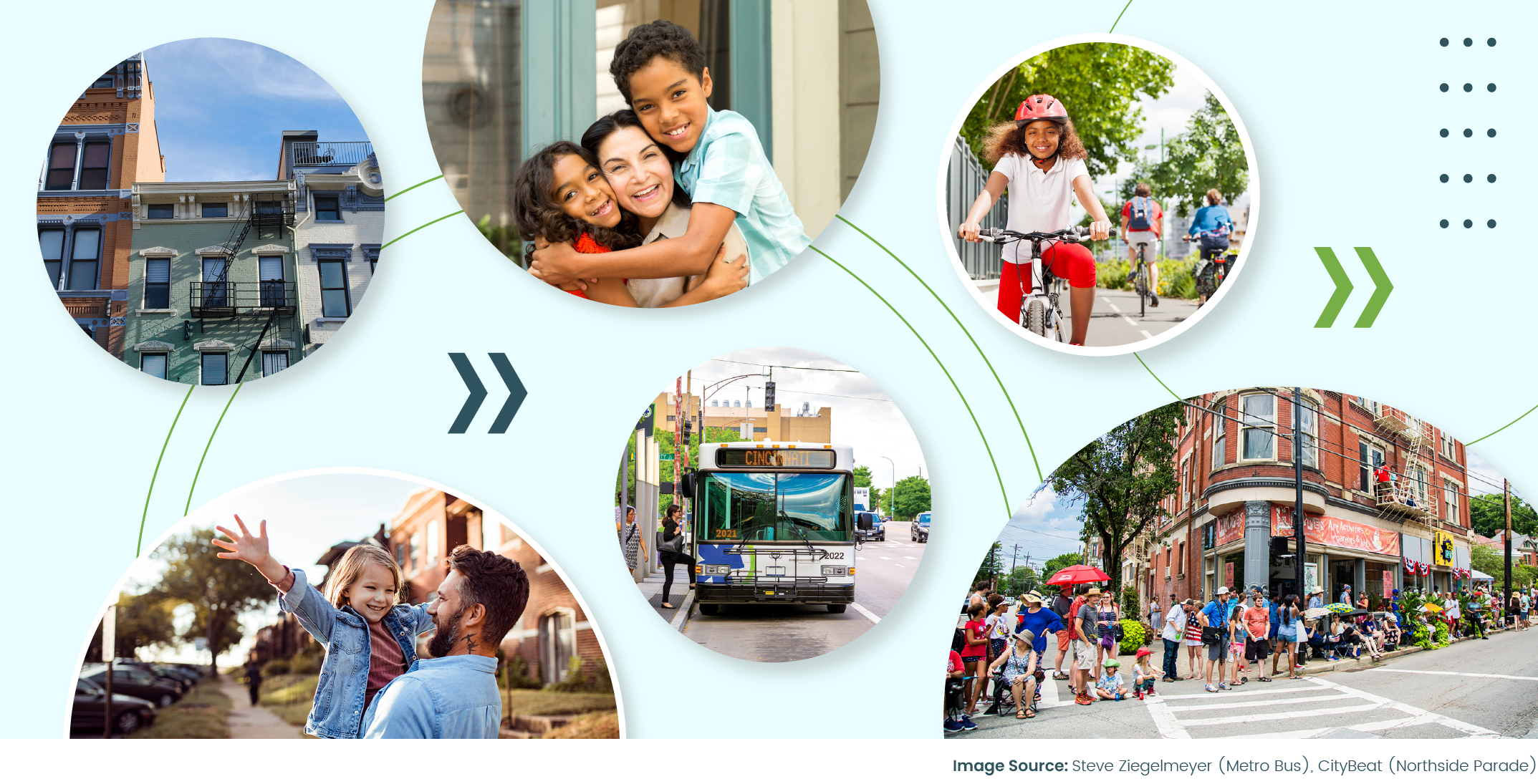Support Connected Communities for a Thriving Cincinnati
Cincinnati is at a crossroads. Our current zoning laws are holding back our city's potential, leading to a housing crisis and limiting opportunities for all residents. It's time for change.
Connected Communities is a plan that will build a more equitable and sustainable future for Cincinnati. By aligning zoning with METRO's major routes, we can create vibrant, pedestrian-oriented neighborhoods that offer diverse housing options and reduce car dependency.
Here's how Connected Communities will benefit our city:
Increase housing options and affordability
Reverse discriminatory zoning and housing loss in neighborhoods
Encourage sustainable growth and reduce sprawl
Create thriving, people-oriented places to live, work, and play
Keep Cincinnati competitive and attractive for residents and businesses
But we need your help to make this vision a reality. The form below will send your comments directly to city council – below the submission form we also have more information summarizing the plan benefits. City Council and the Planning Commission will start voting on this starting May 17th, 2024.
Please submit the form above with your own comments to city council by May 16th. Make sure to let them know you want a sustainable future and support the Connect Communities plan to build new housing and density along Cincinnati’s major transportation by updating the land use and zoning in targeted areas.
Below is a summary of objectives and talking points:
Reverses the decades of discriminate zoning that has left the city segregated
Increases the ability to build more diverse and dense housing
Reintroduce housing types made illegal by zoning
Align zoning with METRO’s major routes while increasing the vibrancy of our Neighborhood Business Districts (NBDs)
Create new opportunities for more attainable homeownership and rentals
Help reduce housing costs by the creation of more rental and homeownership opportunities
Reverse the trend of housing loss taking place throughout most of our neighborhoods
Reduce car dependency by creating thriving corridors along major METRO routes
Eliminate unnecessary red tape that increases the costs of building housing
Discourage expensive and environmentally unsustainable sprawl
Focus on pedestrian-oriented, people-centered community design
Increase options of places to live and do business
Help Cincinnati remain desirable and competitive
1. Zoning dictates the design of the built environment, and currently, it is prohibiting Cincinnati to thrive.
Zoning is based on the city’s plans. As such, Cincinnati was the first city in the US to have a comprehensive plan approved and adopted into law by a City Council. The Official Plan of the City of Cincinnati (1925) aimed to “plan for the orderly development of the city during the fifty years to come” and strived to “foresee and make provision for those things which shall tend to increase the public health, safety, convenience, comfort, prosperity, beauty and general welfare of Cincinnati as a home for its citizens.” The plan is divided into eighteen chapters, outlining a variety of project proposals for rapid transit to “schools and play-yards” improvements, and two appendices, including the building zone ordinance.
This changed with the adoption of the Cincinnati Metropolitan Master Plan (1948) and dramatic zoning changes in the early 1960s, which were among the many regulatory changes that converted the city to a car-oriented orientation, making multi-family housing illegal in most places. This resulted in pushing services, retail, hospitality, and job opportunities further away from where people live, and public transit was no longer an option for most citizens, and a loss of people-oriented places.
2. Cincinnati has a multi-faceted housing crisis, causing pricing to skyrocket in the rental and homeownership markets.
Cincinnati has a tight housing market where demand is outpacing supply. This is causing an escalation in prices, fewer housing options, and pushing people outside of transit corridors and even the city limits. To solve this housing issue and encourage new development, Cincinnati needs to address the problems restricting what types of housing can be built and the barriers to getting them built, including expensive off-street parking requirements.
3. Cincinnati must prioritize the opportunity for desirable places to live and work for all people.
Focusing Connected Communities on the existing METRO major corridors connects Cincinnati in a planned manner while celebrating the individuality of each neighborhood. It promotes human-scale development that creates a sense of place to commune instead of pass through.
Adding density around a series of neighborhood business districts and civic spaces allows for dynamic and thriving places by attracting new residents and businesses, encouraging aging in place, and providing the option to live, work, and play in one neighborhood. For Cincinnati to be sustainable and meet current and growing demand it needs more appealing options and more places for all people to call Cincinnati home.
Please also share your support by attending the Cincinnati Planning Commission meeting on Friday, May 17th, 9:00 am.

